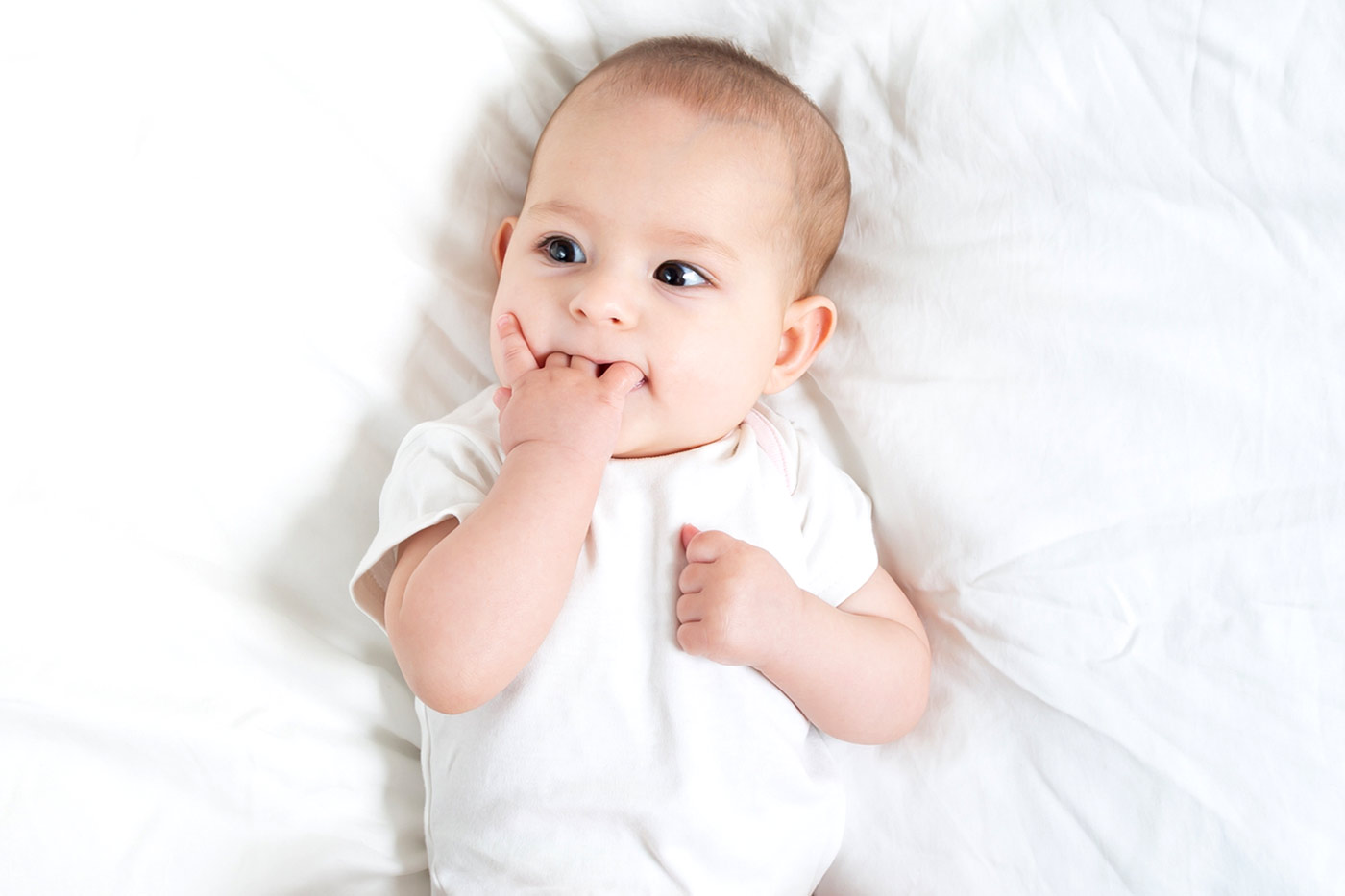Practical Tips for Sleep Training While Teething
Wondering if you can start sleep training while teething? Learn how to tell whether to wait or start as well as what to do if your sleep-trained baby has reverted to old habits because of teething.

It’s quite the conundrum: Just as your baby is about ready to sleep train is also the time when she starts teething.
This makes you wonder: Is it okay to start sleep training while she’s teething? You don’t want to add to her discomfort, but no one is getting any sleep, either. To make matters worse, teething isn’t exactly a one-time event, especially when it seems like she’s been showing symptoms for months.
And what do you do if you already sleep-trained her but she has gone back to old habits like needing to be rocked or nursed to sleep? If your teething baby won’t sleep unless held, is it okay to re-sleep train her again? How do you balance these two pressing needs?
In this article, we’ll talk about sleep training while teething, from what to do if she reverted to old habits to whether to start in the first place. Let’s dive in!
Table of Contents
Determine if it’s chronic or acute teething
It’s never easy when your baby is teething and won’t stop crying. But “teething” can be broken down into two types: chronic and acute.
Chronic teething happens when her teeth begin to move toward the gum line and can extend for weeks at a time. This is often accompanied by excess drool or the desire to gnaw on items. That said, chronic teething doesn’t mean she feels pain for weeks on end—if anything, perhaps she feels some slight discomfort here and there.
Acute teething is when the teeth begin to pierce the gum line and disturb some of the nerves in the area. This is when those peak symptoms of teething may appear: inconsolable crying, lack of sleep, a fever, or a loss of appetite.
As you can imagine, acute teething is when she’ll likely experience the most pain. You’ll know she’s past this stage when she doesn’t show those peak symptoms and her teeth have poked through.
Here’s the key: acute teething happens before you even see any teeth emerging. Don’t wait for the teeth to poke through to determine if she’s in this stage. Instead, rub her gums and see if you can feel the teeth below.
Expert tip
Another way to tell whether she’s crying because of acute teething or something else? If she’s suddenly fine and cheerful the minute you pick her up, it’s unlikely she was crying because of teething pain.
Free resource: Interested in sleep training? Grab 5 Mistakes That Keep Your Baby from Self Soothing—at no cost to you. You’ll also get my newsletters, which parents say they LOVE:
“I just want to say thank you for the work you are doing. The messages in the newsletters always come at a time when I need them most. This one particularly resonated with me this morning! Thank you and may you be blessed as you continue to encourage mamas everywhere!” -Tanesha A.
Avoid sleep training during acute teething
Since your baby might be in pain during acute teething, it’s best to avoid sleep training during this time. Or to put it another way, do what you can to comfort her, even if it means diverting from your regular sleep routine.
If you haven’t started at all and are deciding when to do so, give it a few days until after she’s past this stage.
And if she was already sleep-trained but is struggling with sleep because of teething, it’s okay to offer the comfort she needs (more on how to do that later). For now, try to discern the difference between teething and sleep regression so you can better address her tears.
Don’t worry—you won’t be waiting forever. Acute teething lasts about 3-5 days, after which her teeth will have poked through and she’ll no longer experience those peak symptoms.
This way, you can comfort her when she truly needs it without sacrificing your plans to sleep train for too long.
Besides, if you start sleep training while she’s teething, you might have a hard time telling the difference whether she’s crying in actual pain or because she simply isn’t used to this new way of sleeping. By waiting until acute teething is over, you’ll know that her cries are simply from sleep training.

Balance comfort and routine
Let’s say you’ve already sleep-trained your baby and things were going great… until that inevitable time when he started teething. How can you avoid reverting to all your old ways while still consoling and easing his pain?
Strike a balance between comforting him and sticking to your routine. After all, you’d likely deviate from your routine for other known reasons, like being sick, having had shots, or going on vacation.
The trick is to offer enough comfort while doing the least diversion from your routine. For instance, see if you can comfort him in bed without picking him up by rubbing his body or massaging his gums. Offer remedies like medicine and teething rings and learn how to soothe a teething baby at night.
Then, once acute teething has passed and he’s no longer in pain, return to your previous routine ASAP, even if it means re-sleep training. Don’t worry—he should get the hang of it the second time around and won’t take as long as it may have at first.

Conclusion
It’s certainly ironic that just when you’re ready to sleep train is also when your baby starts teething. Hopefully, you now have a clear plan about how to move forward, whether you haven’t started yet or have to balance his emerging teeth with his need to sleep. Teething—and sleeping!—isn’t a one-time event, after all.
Get more tips:
- 6 Month Old Sleep Regression Signs to Watch Out For
- Sleep Training a 15 Month Old: Tips to Help Your Child Sleep
- 5 Reasons Your Baby Wakes Up Crying Hysterically
- What to Do When Your Baby Wakes Up Every Hour
- 6 Reasons for Your 8 Month Old Waking Every 2 Hours
Don’t forget: Join my newsletter and grab 5 Mistakes That Keep Your Baby from Self Soothing—at no cost to you:

